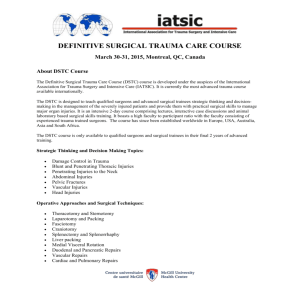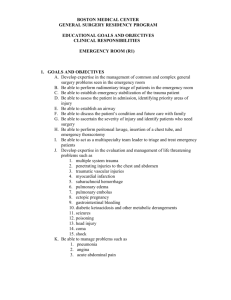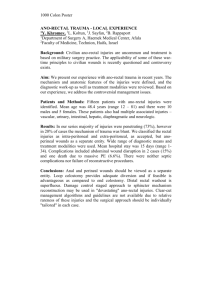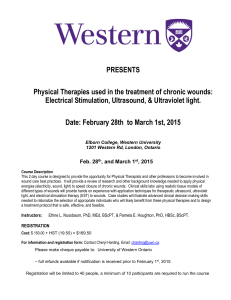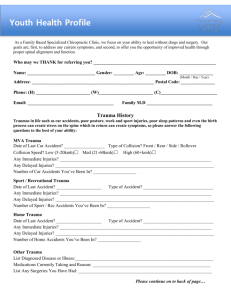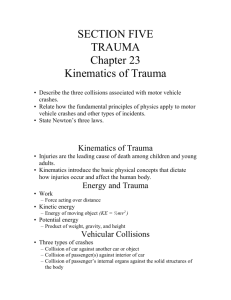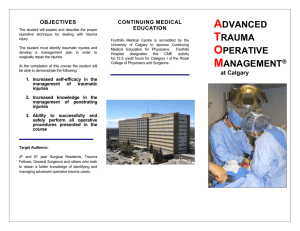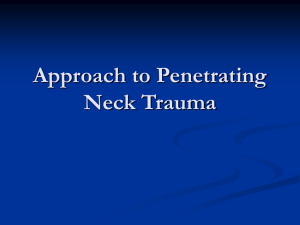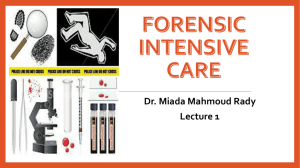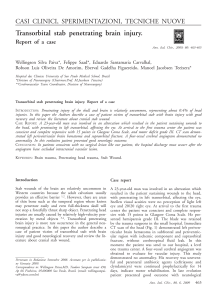General Medical Officer (GMO) Manual: Clinical Section
advertisement
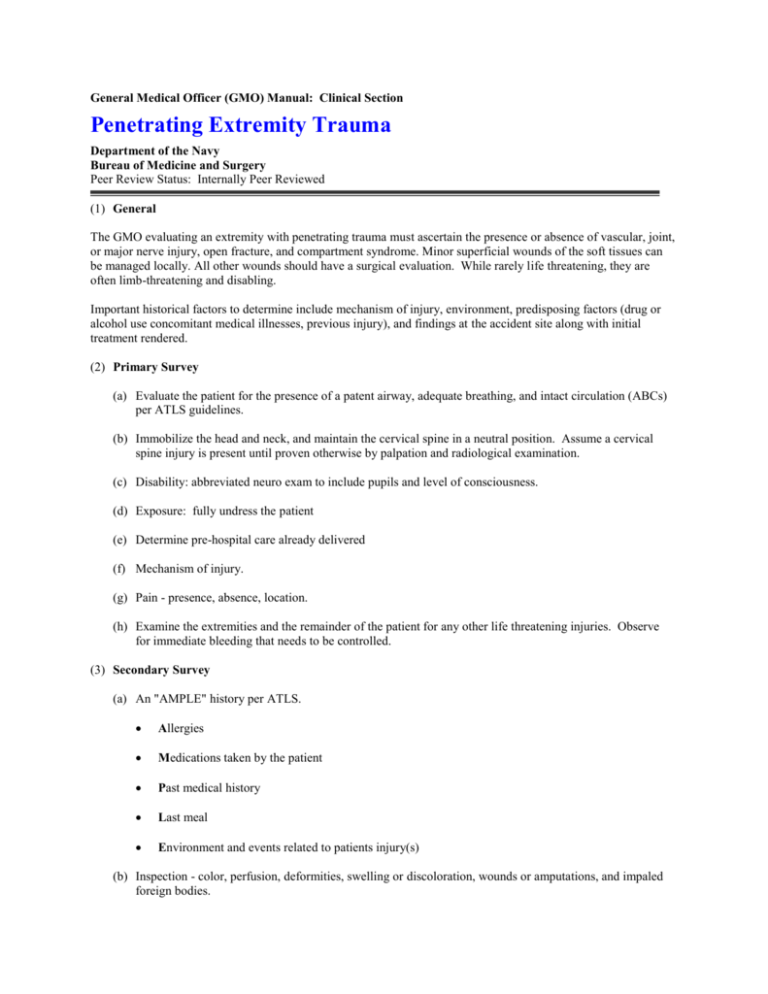
General Medical Officer (GMO) Manual: Clinical Section Penetrating Extremity Trauma Department of the Navy Bureau of Medicine and Surgery Peer Review Status: Internally Peer Reviewed (1) General The GMO evaluating an extremity with penetrating trauma must ascertain the presence or absence of vascular, joint, or major nerve injury, open fracture, and compartment syndrome. Minor superficial wounds of the soft tissues can be managed locally. All other wounds should have a surgical evaluation. While rarely life threatening, they are often limb-threatening and disabling. Important historical factors to determine include mechanism of injury, environment, predisposing factors (drug or alcohol use concomitant medical illnesses, previous injury), and findings at the accident site along with initial treatment rendered. (2) Primary Survey (a) Evaluate the patient for the presence of a patent airway, adequate breathing, and intact circulation (ABCs) per ATLS guidelines. (b) Immobilize the head and neck, and maintain the cervical spine in a neutral position. Assume a cervical spine injury is present until proven otherwise by palpation and radiological examination. (c) Disability: abbreviated neuro exam to include pupils and level of consciousness. (d) Exposure: fully undress the patient (e) Determine pre-hospital care already delivered (f) Mechanism of injury. (g) Pain - presence, absence, location. (h) Examine the extremities and the remainder of the patient for any other life threatening injuries. Observe for immediate bleeding that needs to be controlled. (3) Secondary Survey (a) An "AMPLE" history per ATLS. Allergies Medications taken by the patient Past medical history Last meal Environment and events related to patients injury(s) (b) Inspection - color, perfusion, deformities, swelling or discoloration, wounds or amputations, and impaled foreign bodies. (c) Palpation - sensation, tenderness, crepitation (along with active and passive range of motion in the absence of obvious fracture), pulse, capillary refill, and temperature (d) Signs and symptoms of vascular injury include hemorrhage, expanding hematoma, diminished or absent pulses, bruit or thrill, diminished distal perfusion, decreased sensation, or increasing pain. (e) Signs and symptoms of severe compartment syndrome include pain, pallor, paresthesia, paralysis, pulselessness, and poikilothermia. (4) Ancillary Tests (a) AP and lateral roentgenograms confirm the diagnosis of fractures. Air in the joint space may be seen. Radiographs are useful but not necessary if evacuation indicated by physical exam. If obtained, transport these with the patient. (b) Doppler examination may assist in determining the presence or absence of non-palpable pulses. (c) Ankle Brachial Index (ABI). Measure the doppler pressure in the leg and the arm. The normal ratio is 1:1. If the ratio is <0.9 assume an arterial injury and transport immediately. (5) Diagnosis (a) In penetrating extremity trauma, the presence of any of the above symptoms or signs on exam indicates a major injury requiring surgical evaluation. Specific injuries include: (1) Open fractures and joints. (2) Impalements and embedded foreign bodies. (3) Vascular or nerve injury. (4) Development of compartment syndrome. (5) Major soft tissue loss or amputation. (b) Minor penetrating injuries are diagnosed by exclusion of all the above major criteria. (6) Treatment (a) Initial assessment and resuscitation using ATLS guidelines. (b) IV fluids should be started in patients with crush injuries. (c) Alkalinize the urine and use an osmotic diuretic to minimize renal tubular acidosis (RTA) secondary to myoglobinuria. (d) Minor, superficial wounds may be debrided and dressed. Generally leave wounds open. (e) Major wounds - major soft tissue damage, bone or joint involvement, major nerve injury, vascular injury, or development of compartment syndrome (1) Control hemorrhage by direct pressure: use a tourniquet only as a last resort to control high-grade bleeding. (2) Dress wounds. Do not remove impaled, embedded foreign bodies. (3) Splint in position of function (a sling is adequate for most upper extremity injuries). (4) Administer tetanus prophylaxis, if not current Consider antibiotics in contaminated wounds, or if a delay in definitive care is anticipated. Consult with a specialist first. (f) Evacuate to a facility with surgical capability, as a litter patient if appropriate. Plan for emergent transport and definitive care within two hours. (g) Amputated parts may be wrapped in sterile, saline moistened dressings, and sent on ice with the patient. Ice must not contact tissue directly. (h) Communicate with the accepting facility before transfer in all cases. (7) Surgical Consultation Since all but minor injuries will require surgical consultation, few if any significant injuries will be missed. All history, findings, and details of treatment should be documented and accompany the casualty. References (a) Emergency War Surgery, Second United States Revision of The Emergency War Surgery NATO Handbook, Chapters XVI, XVIII, XIX, XX, and XXI, 1988. http://www.vnh.org/EWSurg/EWSTOC.html (b) Musculoskeletal Trauma, chapter 8, Advanced Trauma Life Support for Doctors, Student Course Manual, American College of Surgeons Committee on Trauma, pp. 243-272, 1997. Revised by CDR Lawrence H. Roberts, MC, USN, Trauma Training Coordinator for the Navy, Department of General Surgery, Naval Medical Center San Diego, San Diego, CA (1999).
